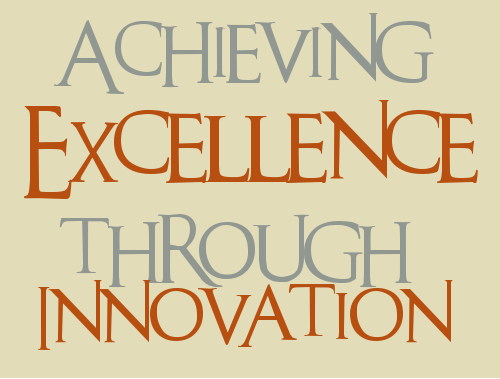A common myth is that innovation can’t happen on a day-in-day-out basis. However, innovation does not necessarily mean inventing groundbreaking stuff. It essentially means improvising ways and means of doing the same tasks, so as to do it better, in a ‘smarter’ way.

Excellence and innovation can be used not just in a professional context by the CXO level executives but also by everyone of us in our daily lives. If you have moved to a new locality and drive to work, the road to your office might seem convoluted. However, in a week or so, you experiment and you find out not just the shortest but the less crowded yet shortest path. This is innovation. You may have opted to learn about a new platform or technology and would be facing hiccups with the code, new syntax and so on. As you keep working on it, you devise new ways of storing data, syntax or just lookups which make your task easier. This is innovation. And when you and the entire organisation along with you, starts making smaller innovations in their work, that rolls up to a much larger drive. And that becomes the effort of an organisation towards achieving innovation at workplace. Innovation which leads to excellence in everything we do. Innovation which leads to excellence in client relationships, intra and inter-team dynamics.
If we refer to any write-up on business productivity, business improvements and innovation, it is clearly seen that contact points are the ones where most of our innovations happen. What exactly are contact points? They are the points of contact with the client. Think of a retail store which you last visited. You roll the cart towards the checkout counter – That is where you meet the customer service representative. That is a contact point for the retail store. You should not be surprised to see most of the innovations around that contact point – For example, the billboards just above the point of sale, the feedback kiosk with a box of candies, the growing variety of quick merchandise stocked near the counter or even the ever changing self-checkout kiosks.
Think of an airline. Starting from the point when you queue-up at the check-in counter, to when you board the flight to the time you get down from the flight, each is a contact point with limitless ways of attaining excellence. The airlines understand this. As a result, you see a smile being worn on each of the cabin crew. Your feedback about the airline is taken seriously and changes made. The airline industry actually takes pride in innovating around their touch points.
Financial institutions, banks, insurance companies all of them rely on these contact point opportunities to serve customers better, smarter and that is what gives way to innovation. As organisations mature, they perfect the art of innovation. And it starts with contact points.
For software organisations like ourselves, we have over 700+ software programmers working for clients. In a day, over 200+ discussions happen with clients. That rolled up over a month gives us over 40,000 opportunities to showcase our quest for excellence, our drive for innovation. It can start with improvisation of communication skills, taking notes and circulating minutes of the meeting religiously or it can just be responding to an email promptly or it can even be sending off an email as soon as a job is done and it can be anything else as well. It is said that the best ideas are generated from people directly in touch with the clients on a day to day basis. Harnessing these ideas, nurturing them and leading them to execution would set the stage for newer levels of innovation.
Alternatively, innovation is best initiated at the periphery of organizations as it will be relevant to clients and not just by CXOs in an organisation. I believe that for businesses to excel, the client-facing staff need to open up and share their ideas and feedback with the team. These ideas, if effectively harnessed, ensures client satisfaction and delight. And isn’t that what we are in for?
The question we need to constantly ask ourselves is: Have we done enough to share the idea which can help me innovate around my contact point?
Author – Subhendu Pattnaik